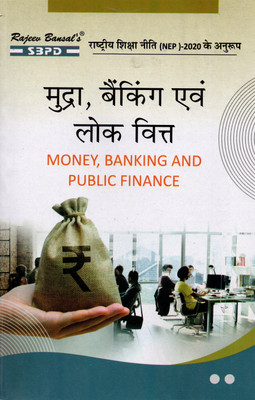NEP Mudra Banking Evam Lok Vit - Money Banking And Public Finance BA 4th Semester(Paperback, Hindi, Prof. B.L. Ojha, Dr. Anupam Agarwal)
Quick Overview
Product Price Comparison
Money and Banking: 1. Definition and Functions of Money 2. Classification of Money 3. GreshamŌĆÖs Law 4. Role of Money in Capitalist Socialist and Mixed Economics 5. Paper Monetary Standard Principles of Note Issue and Indian Currency System 6. Quantity Theory of Money 7. Supply of Money Money Multiplier and High Powered Money 8. Commercial Banks : meaning Types and Functions 9. Credit Creation Process Purpose and Limitations Appendix: Liabilities and Assets of Banks 10. Nationalisation of Banks in India 11. Banking System Reforms in India 12. Central Banking or Apex Banking 13. Reserve Bank of India 14. Monetary Policy Public Finance: 1. Meaning and Scope of Public Finance 2. Public Goods Vs. Private Goods 3. The Principles of Maximum Social Advantage 4. Marketing Failures and Role of Government 5. Public Expenditure: Meaning and Nature] 6. Classification and Canons of Public Expenditure 7. Economic Effects of Public Expenditure 8. Trends and Growth of Public Expenditure in India 9. Public Revenue : Meaning Classification of Sources 10. Canons of Taxation and Characteristics of Good Tax System 11. Benefit and Ability to Pay Principles of Taxation 12. Impact and Incidence of Taxation 13. Taxable Capacity 14. Effects of Taxation 15. Fiscal Polity : Objectives and Role 16. Budget Structure and Sources of Revenue-Expenditure 17. Major Tax Reforms in India 18. Financial Federalism and Financial Adjustment in India 19. Role of the Finance Commission 20. Finance of Local Bodies


